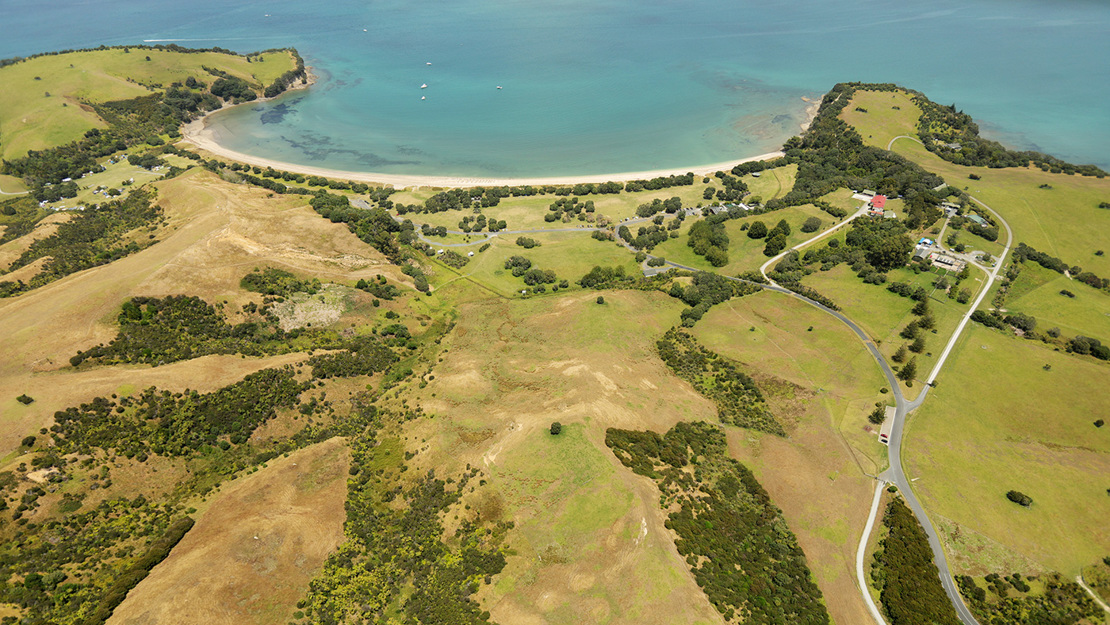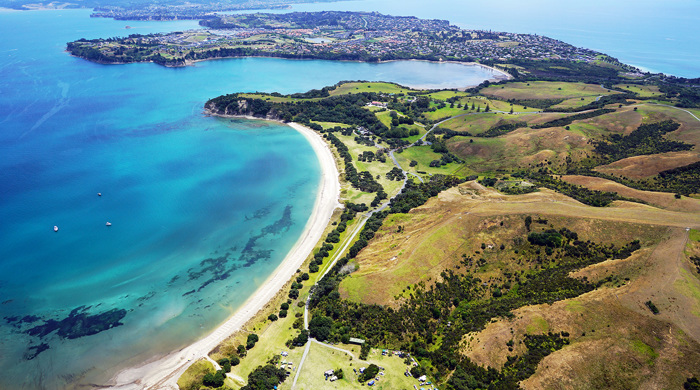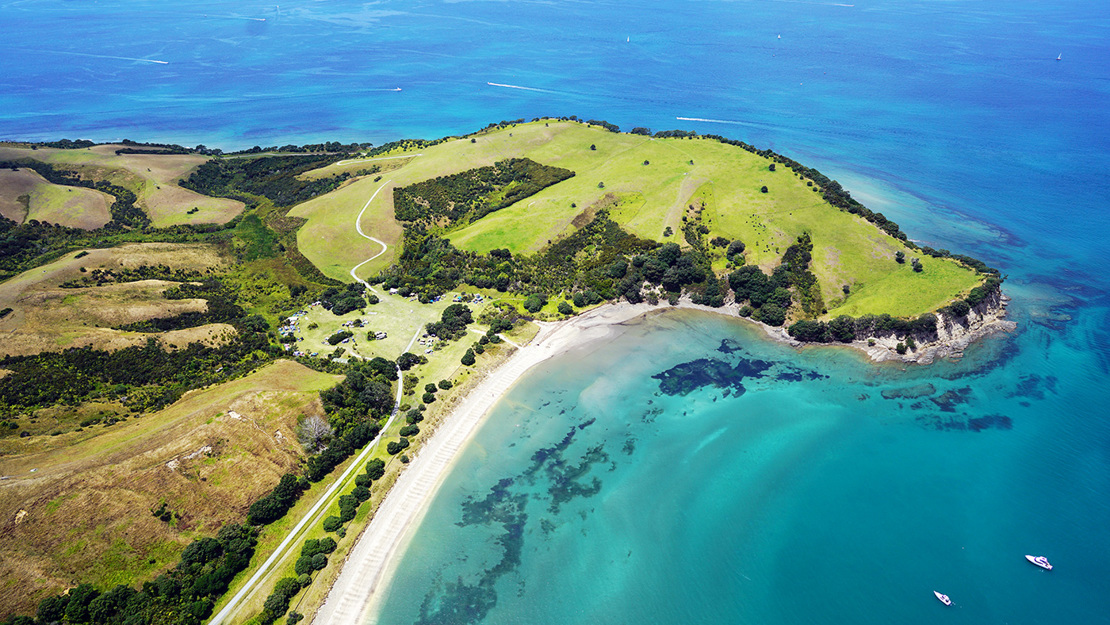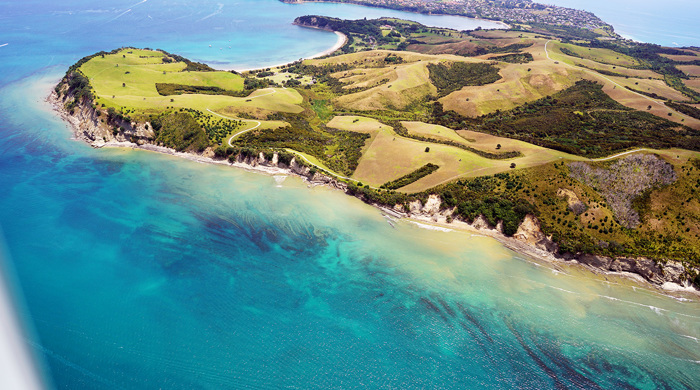Shakespear Open Sanctuary
Shakespear Open Sanctuary is a pest-free wildlife sanctuary at the end of the Whanagaparāoa Peninsula. The sanctuary is an important stepping stone for wildlife to the mainland from nearby islands such as Tiritiri Matangi.
Size: 258 hectares
Site description
Shakespear Open Sanctuary is one of Auckland’s most visited nature reserves. It is situated on the headland at the eastern end of the Whangaparāoa Peninsula. It includes most of Shakespear Regional Park and the New Zealand Defence Force land at the end of the peninsula.
The Open Sanctuary was established in 2010 with the construction of a predator-proof fence across the peninsula and the subsequent removal of pest animal species. It is connected to the urban part of the Whangaparāoa Peninsula by a narrow, low-lying isthmus between Army and Okoromai Bays. It provides a valuable ecological linkage between the Auckland mainland and Tiritiri Matangi Island.
Parts of the regional parkland within Shakespear Open Sanctuary are still farmed. Gullies, wetlands, remnant vegetation and native restoration plantings are fenced off and protected from livestock access.

Key ecosystems
Native vegetation within this biodiversity focus area includes:
- mature coastal forest (WF4) remnants in gullies
- pōhutukawa treeland, flaxland and rockland (CL1) on the headland’s steep sedimentary cliffs
- areas of regenerating shrubland (VS3), particularly on the northern side of the headland
- freshwater wetlands dominated either by raupō reedland (WL19) or Machaerina sedgeland (WL11)
- saltmarsh (SA1) has regenerated within the lowest-lying parts of the isthmus following the restoration of water levels.

Native fauna
Protected within Shakespear Open Sanctuary is a diverse range of native birds. Common forest bird species include:
- tūī
- kererū
- pīwakawaka (fantail)
- riroriro (grey warbler)
- tauhou (silvereye).
Korimako (bellbird) and kākāriki have both self-introduced from nearby Tiritiri Matangi Island and are now breeding successfully within the sanctuary. Kākā are occasional visitors.
Wetland birds present include:
- pūweto (spotless crake)
- mātātā (fernbird)
- poaka (pied stilt)
- mioweka (banded rail).
Tūturiwhatu (New Zealand dotterel) and tōrea pango (variable oystercatcher) nest within the sanctuary. Many other shorebird species utilise the intertidal flats of Okoromai Bay for foraging.

Since becoming pest-free, certain species have been able to be reintroduced to the sanctuary and are establishing. These include:
- pōpokatea (whitehead)
- toutouwai (North Island robin)
- tīeke (North Island saddleback)
- kiwi pukupuku (little spotted kiwi).
Small populations of seabirds are starting to reestablish, including:
- kororā (little penguin)
- ōi (grey-faced petrel)
- pakahā (fluttering shearwater)
- kuaka (diving petrel).
Many species of native skink and gecko are naturally present here. The lizard diversity is high for the mainland of Tāmaki Makaurau / Auckland.

Revegetation
Large areas of the parkland have been restored through native plantings. Seed is collected locally and raised in an onsite nursery run by Shakespear Open Sanctuary volunteers. These volunteers are involved in a wide range of conservation activities across the sanctuary.



